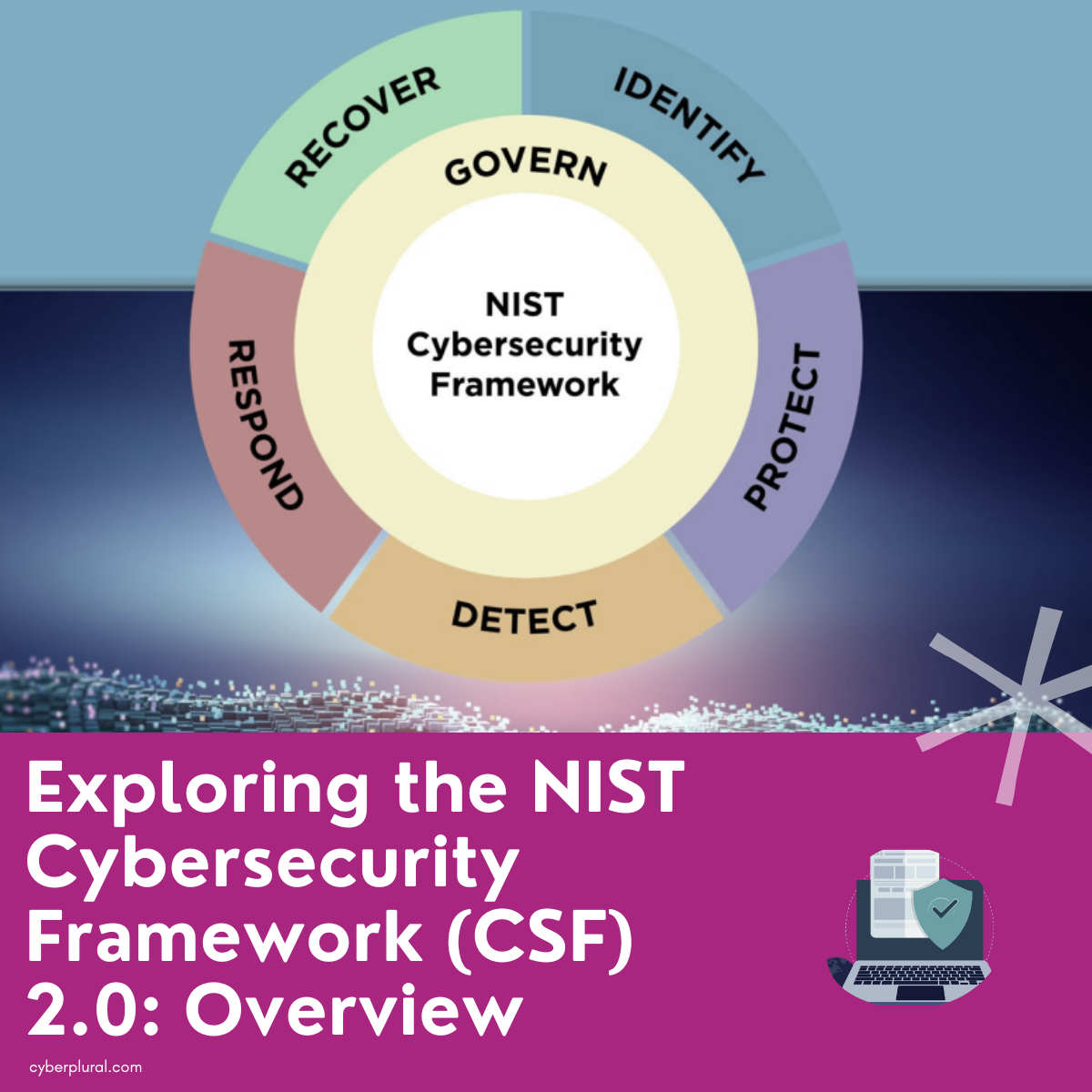Exploring the NIST Cybersecurity Framework (CSF) 2.0: Overview

Abstract
The NIST Cybersecurity Framework (CSF) 2.0 is a comprehensive guide designed to assist organizations in managing cybersecurity risks effectively. This framework provides a set of high-level outcomes that can be applied by organizations of any size or sector. It does not mandate specific actions but rather offers links to online resources for further guidance and implementation.
Functions
- GOVERN (GV): The Govern function within the CSF 2.0 focuses on establishing a robust risk management strategy, defining roles, and formulating cybersecurity policies to guide organizational decision-making.
- IDENTIFY (ID): Under the Identify function, organizations are encouraged to understand their current cybersecurity risks, manage assets effectively, and maintain a clear inventory of their digital resources.
- PROTECT (PR): The Protect function emphasizes safeguarding assets through measures such as identity management, employee awareness programs, access controls, and encryption to enhance overall security posture.
- DETECT (DE): The Detect function involves actively identifying and analyzing cybersecurity attacks and compromises to respond promptly and mitigate potential damages.
- RESPOND (RS): In the Respond function, organizations are guided on taking swift and effective actions when a cybersecurity incident is detected, including containment, eradication, and recovery efforts.
- RECOVER (RC): The Recover function focuses on restoring assets affected by a cybersecurity incident to normal operations swiftly and efficiently.
Profiles and Tiers
Organizational Profiles: The CSF 2.0 encourages organizations to develop Organizational Profiles that describe their current and target cybersecurity postures. These profiles provide a clear roadmap for improving cybersecurity resilience over time.
Tiers: The CSF 2.0 introduces Tiers that characterize an organization’s risk management practices as Partial, Risk Informed, Repeatable, or Adaptive. These Tiers help organizations gauge their cybersecurity maturity level and progress towards more effective risk management practices.
Integration with Other Risk Management Programs
The NIST CSF 2.0 is designed to complement existing risk management programs within organizations. It can be integrated with Enterprise Risk Management (ERM), privacy risk management, supply chain risk management, and emerging technology risk management initiatives. By aligning these programs with the CSF, organizations can enhance communication, streamline decision-making processes, and improve overall cybersecurity resilience across the organization.
In conclusion, the NIST Cybersecurity Framework 2.0 serves as a valuable resource for organizations seeking to strengthen their cybersecurity posture and effectively manage cyber risks in an ever-evolving threat landscape. By implementing the functions, profiles, and tiers outlined in the framework and integrating them with other risk management programs, organizations can enhance their cybersecurity capabilities and better protect their digital assets.

Leave a Reply